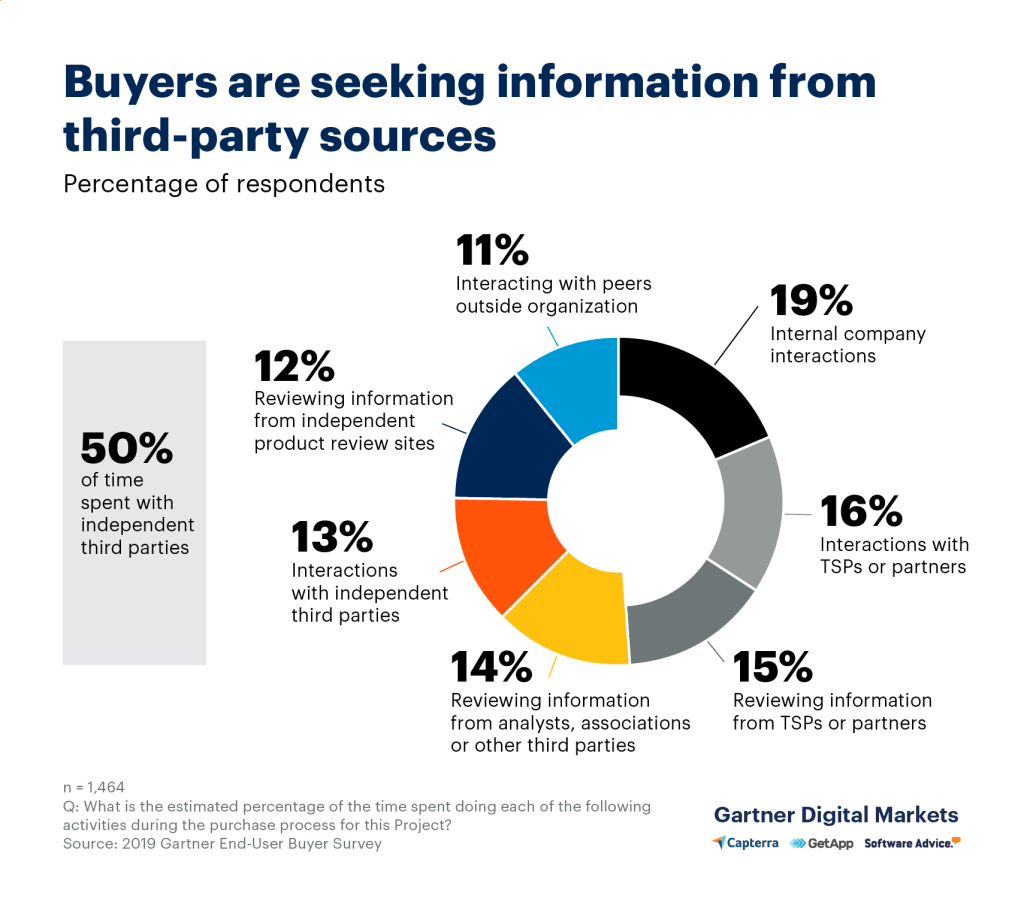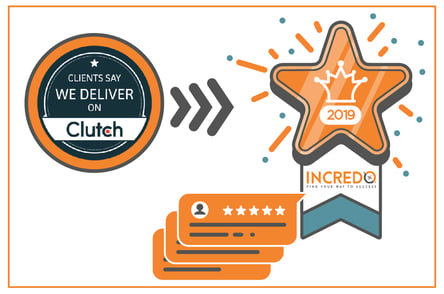Buyer intent data is a powerful tool to boost sales and revenues.
If you’ve ever run an ad campaign, you must know the power of ‘knowing your customers.’ Understanding customer’s wants has helped businesses and entrepreneurs achieve milestones.
And now, there’s a new kid on the block – buyer intent data – that helps marketers know the ‘intention’ of the prospective customer and plan their outbound sales strategy accordingly.
Imagine if you could capitalize on the intention of your target customers. It’s like holding an ace in poker – you’d just need to play that card at the right time and win the game!
With buyer intent data, companies are literally improving their outbound prospecting in terms of copywriting, lead generation, keyword optimization, and content marketing to actively engage with their target audience at the right time.
Sounds a bit overwhelming.
Don’t worry, I’ll break it down into digestible sub-topics. Let’s start from the basic:
What is Buyer Intent Data?
Buyer intent data is a collection of useful information about individual users and their online activity. In other words, it refers to the ‘intention’ of a prospective buyer during the process of their purchase of a service or the product.
Intent data consists of aggregated behavioral signals which enable marketers and companies to identify prospective buyers during the buying cycle. It comes down to finding the best leads. And that means putting your customer’s wants, needs, and interests at the center of all your marketing and sales campaigns.
Sources of Generating Intent Data
These days marketers are using different data analytics tools for measuring intent data and outbound prospecting. These tools help businesses map out intent data. With this data, businesses get a clear picture of where their buyers are in the marketing funnel, and separate weak leads from strong leads.

There are two main sources of intent data – internal intent data and external intent data.
Internal Intent Data: Often referred to as the first party-intent data, this data is collected via application logs or marketing automation platform. One of the advantages of collecting data through this source is that you marketers have control over what data they collect, and how they collect it.
External Intent Data: External intent data is collected outside of the organization, from different external sources such as cookies on specific websites, IP lookups and similar sources. Many businesses today partner with external data providers to take advantage of valuable data from cookies and more.
Benefit of Focusing on Intent Data
With buyer intent data, businesses don’t necessarily need to focus on generating a huge amount of leads for outbound prospecting. It’s about helping marketers find specific leads that have a higher potential of conversation. In other words, it lets marketers cut to the chase by eliminating wrong leads.
The sales and marketing team now has the benefit of approaching visitors with a higher purchase propensity, thus minimizing the cost of acquiring customers and increasing the conversion rates.
I’ll explain this concept with a story:
Ronit, an ecommerce store owner, had 1000 daily visitors on this website. He used a data analytics tool to find intent of these visitors and figured out 30% of his visitors were there to read his blogs, 30% visited to find product ideas, and only 35% seemed interested in buying the product.
So, Ronit started to focus on those 35% of his visitors who’re there to buy his products and planned his marketing strategies accordingly. In short, he eliminated the unnecessary crowd and found specific leads.
Now, let me sum up few more benefits of utilizing intent data:
- Improve outbound prospecting results by reaching out to qualified leads
- Advanced sales prioritization
- Lead More accurate and account-based marketing campaigns
- Create relevant and targeted intent
How to Use Intent Data for Effective Sales and Marketing Alignment?
Now that you understand what intent data is, let’s review some specific strategies that can help your business boost sales and revenues:
1. Segment Intent Data: Once you’ve gathered intent data from different sources, you should start focusing on segmenting them into different categories based on the buyer intent. You’ll be able to see different phrases and terms customers are using – which corresponds to the different stages in their buyer’s journey.
For example, when a buyer is in the consideration or awareness stage, they’ll be searching for keywords such as ‘how to,’ ‘best,’ and ‘reviews.’ Similarly, if a prospect is in the decision stage of their buyer cycle, they’ll search with terms such as ‘buy,’ ‘cheap,’ ‘warranty,’ and ‘free shipping.’
With these phrases and terms, you’ll not only be able to find prospective leads but also reach out to the right audience at the right time. So, if Group A is at the consideration stage, you should provide them with more how-to content. And if Group B is at the decision-making stage, you should reach out to them with personalized offers and discounts.
B2B marketers can rank their leads into different tiers like this:
- Informational intent: Here, the buyers are just looking for information. So, they are not the high priority leads. But you shouldn’t ignore them either. Instead, provide them with the information that aligns them with your brand’s offerings.
- Commercial intent: Here’s your gold mine. Prospects with commercial intent usually compare different services and prospects and they’re in the last stage of buyer’s funnel. So, reach out to them urgently with attractive offers.
- Transactional intent: At this stage, buyers are ready to buy the product. Here, you should focus on creating an urgency, so they make a purchase soon.
By segmenting your audience and using a prioritization system, you’ll be able to differentiate between low or high-quality leads, and hence allocate your outbound prospecting resources accordingly.
2. Using Intent Data for Content Strategy: As a marketer, one must consider buyer intent while creating content for their brand website, newsletter, or any content for that matter. You should understand why buyers are reading your blog content, why they are visiting the product page, and why they’re downloading the eBooks.
So, if you understand the audience intent, you will be able to figure out which stage of the buyer journey they’re in, and then create an informational and educational content that helps to give them a little push towards buying the product.
I also recommend capitalizing on this knowledge you gain about your audience intent. It’d work better if you use relevant keywords and headlines for your content that indicted the intention of your target readers. This way, these buyer’s will know that a specific content will address their needs and give them the information they need.
3. Using Buyer Intent for Keyword Optimization: You can utilize buyer intent data for keyword optimization and ace your outbound sales strategy. When researching the keywords for your blog, always ask ‘why is the buyer using a specific keyword?’ Once you know the answer to this question, you’ll be able to map out content with relevant keywords that you have prioritized and assessed.
I’d recommend working closely with your sales team to find keywords that can help your brand generate more leads, and further streamline your SEO efforts with marketing and outbound sales strategy that will further drive your sales conversion rates.
4. Focus on Targeted Advertising: Brands use intent data for their outbound sales strategy, such as targeted advertising. Customers today like more personalized marketing efforts, and buyer intent data can help you deliver the same.
If you really want to convert random visitors into customers, start leveraging the power of buyer intent data. Intent data can be used for creating targeting advertising campaigns and more personalized banners, headlines, and display ads. You can create a personalized piece of content to grab customer attention and engage them.
5. Automatic Outreach: By using intent data and forecasting, brands can also predict where a lead will be within the sales after a particular point of time. So, you can leverage this as well. A lot of marketers use this information to send triggered and pre-programmed messages to such leads.
Marketers can also predict and respond to audience intent in a more contextual, proactive, and relevant manner – irrespective of where they are in the buyer journey. We recommend applying advanced analytical models and AI methods to cultivate on value generating behaviors and reach customers on appropriate timing.
6. Personalizing Website Experience: When a new visitor visits your website, your goal should be to encourage them to fill out the form and share who they are. Because, if they don’t do the same, they’ll remain anonymous and their activities will remain anonymous too.
You’ll not know who they are, and hence, you’ll not be able to send them customized newsletters or targeted emails. So, if you design your website for anonymous visitors – in a manner it encourages them to subscribe.
Apart from this, experts also recommend hyper-personalizing digital experience which can be done through buyer intent data. For example, if person A visits the same product page multiple times, their activity shows their intention of buying the product. Hence, it’s worthwhile to have a system that triggers a cross-channel campaign to push customers towards conversion.
7. Uncover Patterns of Your Customers:
What many marketers choose to ignore is that buyer intuition starts before the buyer even lands on the website or product page. I understand it’s difficult for digital marketers or sales teams to understand how aware a user is when they first visit a brand’s product page. However, this dramatically impacts the decision making.
Hence, if you really want to leverage buyer intent data for your marketing strategies, consider uncovering patterns of your customers. You can use intent data to uncover patterns of usage behavior and drive buyers engagement in the purchase phase of customer journey, and in the post-purchase phase (customer retention).
8. Real-Time Optimization of Intent Data: Real-time intent is similar to icing on the cake. It opens new doors for marketer – helping them understand prospect interest at the earlier stage (the first sign of interest) – and automates marketing actions very early in the buying cycle.
Real-time optimization of intent data gives marketers an edge in staying ahead of their competitors – because they become capable of identifying prospects interested in their market, well before their competitors do. In other words, marketers are becoming more data-driven and efficient by utilizing real-time intent data.
SaaS Products & Buyer Intent Data
SaaS product sales are characterised by complex buyer journeys, long sales cycles, and multiple decision making. Reaching the right buyer, with the right message, and at the right time is crucial for SaaS businesses to survive.
So, how can businesses cut through the competition and reach the right buyer who’s in an active buying journey?
The Answer Is Buyer Intent Data. Here’s How:
- Intent data shows which visitor or account is actively researching for a product in areas of interest to your SaaS brand – helping you find where they’re in their buyer journey.
- This data becomes valuable insights to your marketing teams who find the right audience to engage and convert.
That’s Not All. With Buyer Intent Data, SaaS Marketing Teams Can Also:
- Develop keywords strategy to target early, mid, and late-stage buyers
- Focus marketing budget for maximum return of investment
- Launch campaigns into accounts with higher conversation possibility
- Create content to attract buyers in all stages
Start Leveraging Intent Data in 2021
It’s a no-brainer. With a great understanding of buyer intent, you’ll be able to cut to the chase. You’ll have a much better idea of what basket to put your eggs in. In other words, your business will be able to boost the lead qualification process and increase sales conversions.
Hence, the businesses today should take intent data seriously – especially if they want to follow a performance-driven strategy.
Have you ever leveraged intent data? What are the strategies you’ve used or would like to use? We’d love to hear how you plan to use it and what you think. So, use the comments section below and share your wisdom!



Comments